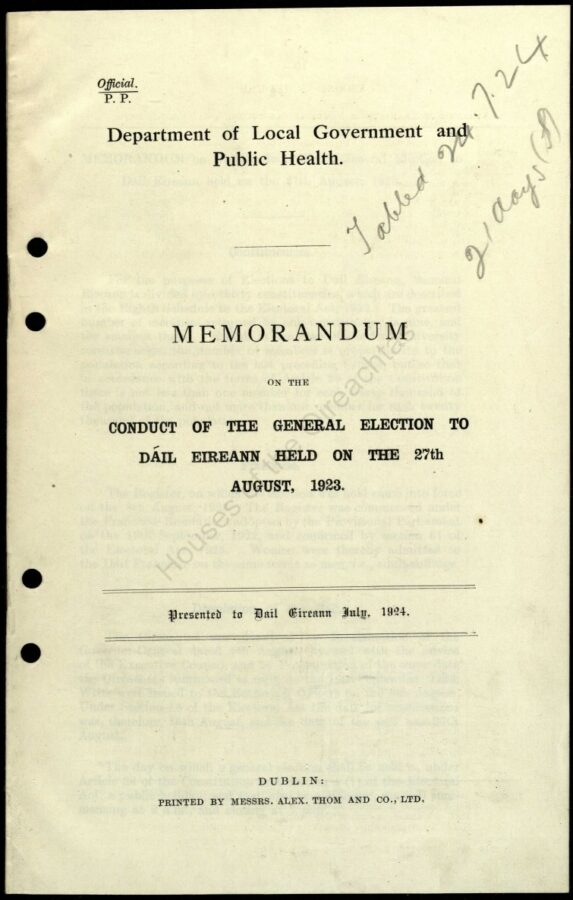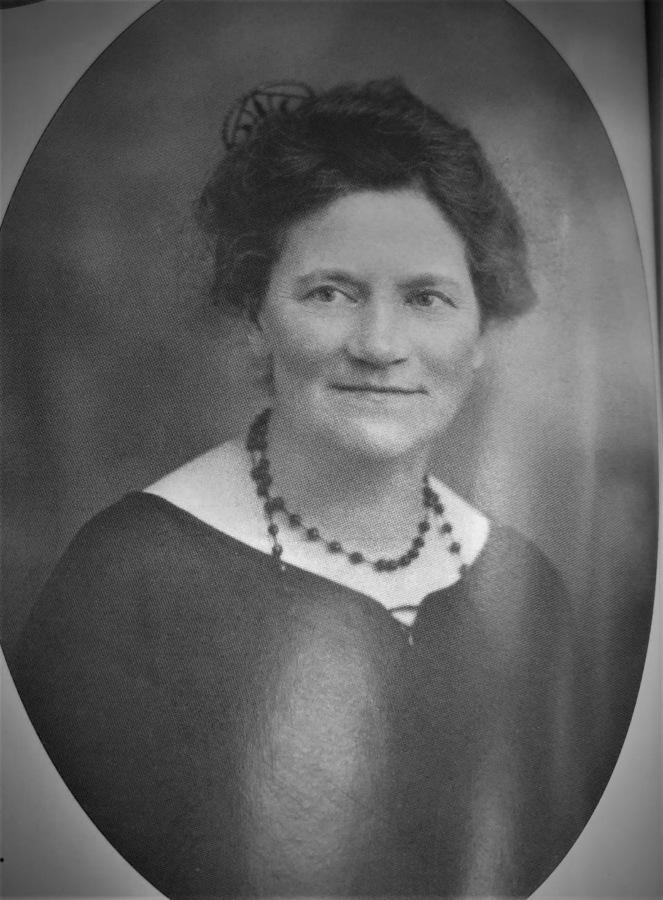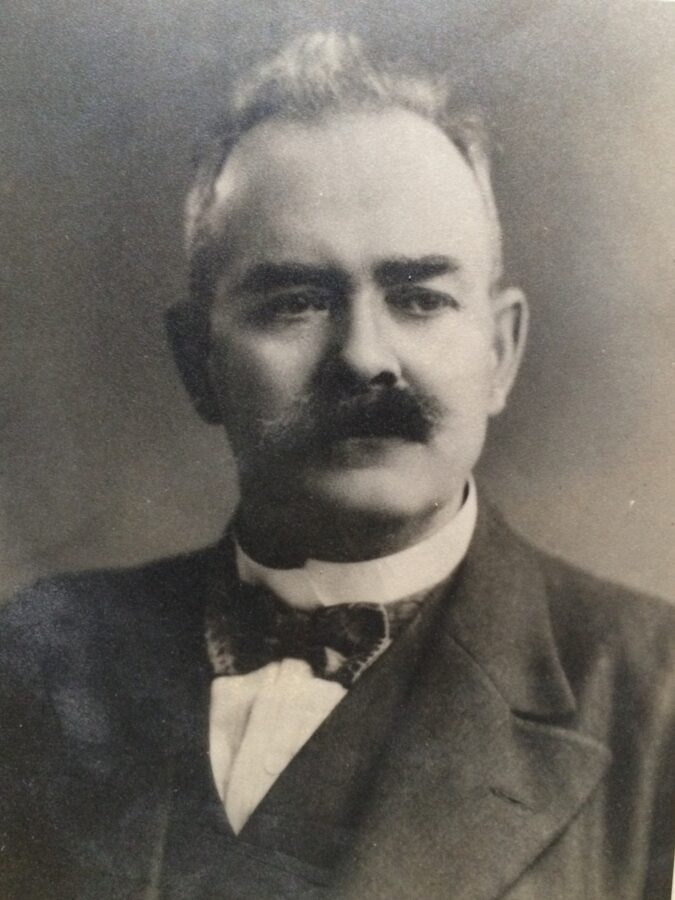
Kieran’s Our City, Our Town Article,
Cork Independent, 31 August 2023
Recasting Cork: Results of the 1923 General Election
On 27 August 1923, at the conclusion of the polling for membership of Dáil Éireann in the Cork Borough (one of 30 constituencies) the ballot boxes from the different electoral areas were conveyed to the City Courthouse and launched in the Sub Sheriff’s Office.
Returning officer Mr Francis Hanrahan and his staff then checked the votes of the absent postal voters, numbering about 205 – the result of this meant their work extended into the small hours of the morning. This work was carefully performed in the presence of the authorised agents of the election candidates.
The following morning, on 28 August 1923, the boxes were brought to the Technical Institute by members of the counting staff. A total of 130 boxes were brought from one building to the other in lorries in which members of the stuff were accompanied by armed military. The first batch of boxes, twenty in number, were brought to the counting room and just after 11am the counting began. Mr Hanrahan with a legal assessor Mr William Mockler were in attendance as well as a number of Civic Guards and military were on duty inside and outside of the building.
The number of public in attendance at the start was small but grew as the day went on. The formal election of Cork City’s five elected candidates would not be made known for a considerable number of hours.
The candidates who sought election were: Alderman James J Walsh, Postmaster-General (Cumann na nGaedheal), Professor Alfred O’Rahilly, Alderman Richard H Beamish (Cork Progressive Association), Andrew O’Shaughnessy (Cork Progressive Association), Mary MacSwiney (Sinn Fein), Con Lucey (Sinn Féin), Alderman Frederick Murray (Sinn Féin), Timothy Corcoran (Farmer’s Association), Robert Day (Labour), R S Anthony (Labour), William Kenneally (Labour), Captain Jeremiah Collins (Independent), and Sir John Harley Scot (Independent). Those candidates included three outgoing members Alderman J J Walsh Robert Day and Mary MacSwiney.
The initial counting did not conclude until 7pm, and it was then learned that the total poll was 43,256 out of a register of 66,700. The required quote became 7,000 votes. At that point the election count was suspended till the following morning, 29 August. Overnight the checked ballot papers were lodged in a huge box, on which wax seals replaced and the lecture theatre was then closed and all its doors sealed. Outside the doors armed military replaced on duty and representatives of the candidates were permitted to remain within the precincts.
On the following day, 29 August, at 9am the wax seals were broken in the presence of the candidates and their representatives, and the counting was resumed. The only candidate to hit the quota was Alderman James J Walsh who had a surplus of over 10,000 votes above the quota itself. From the start of the count his heading of the poll was assured. Whereas J J Walsh knew his fate early, to reveal the other four successful candidates the count lasted all that day and night and ended at 7.30am on 30 August. Professor Alfred O’Rahilly, Alderman Richard Beamish, Mary MacSwiney and Mr Andrew O’Shaughnessy were then elected in this order.
Tensions remained high though between Sinn Féin and the local Civic Guard. Mary MacSwiney in a letter to the Cork Examiner on 30 August 1923 noted she was unhappy with the raids on Sinn Féin offices and arrests in the City; “Our agents have been arrested in Bantry, rooms rated come out and election literature seized in Clonakilty and a numerous raids and arrests have been affected in the city. Mr J Hennessy, who acted as scrutinising agent yesterday was looked for last night, and his house raided. He was fortunately not at home but as a consequence we are deprived of his services to today. Mr Sean Nolan, who is in a very serious state of health, was arrested at 5.30pm yesterday. He spent the night in the underground dungeons of the Courthouse… what is this brutality for? Just for acting as Sinn Féin director of elections”.
On 30 August as well a meeting of the Executive Committee of the Cork Progressive Association was held evening in the Offices on the Grand Parade.
Returned TD Mr. James J Walsh for Cumann na nGaedheal was warmly received. He emphasised the fact that the verdict from Cork was an endorsement of the policy pursued by the Government during the past twelve months; “It is therefore an encouragement to them to pursue a strong, firm and just Government, discriminating impartially between all its law-abiding citizens; The combination of Cumann na nGaedheal and Progressives under one banner was a happy augury for the future progress of the city. It combined under one standard the different elements of the community, eliminating sectional entities, and, as the election showed, was endorsed by all classes in Cork”.
Alderman Beamish, who was also enthusiastically received, noted that the election result had clearly indicated one thing, that throughout the country in general, that Irish people were now determined to uphold law, order and progress and that the country was are on “the eve of a new direction of thought”, in which the consistent progress of all Ireland would be the first consideration amongst its members.
In the overall General Election result Cumann na nGaedheal took a majority of seats, which were taken in the Dáil and formed the 2nd Executive Council of the Irish Free State on 19 September 1923. William T Cosgrave again became the President of the Executive Council.
Caption:
1217a. Front page of report on General Election 1923 (source: National Library, Dublin).

